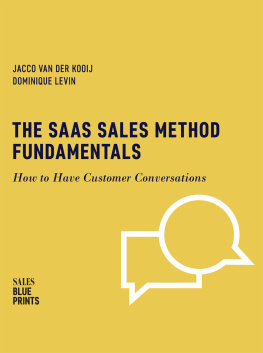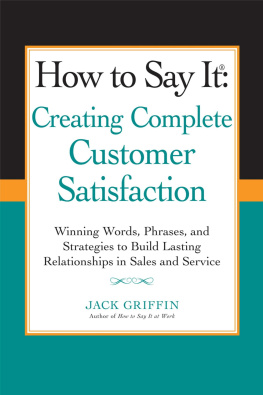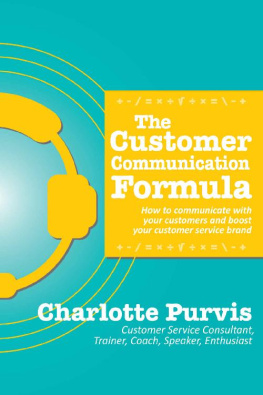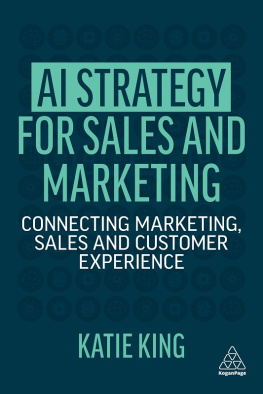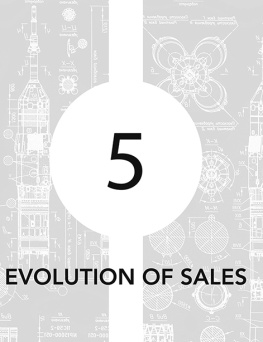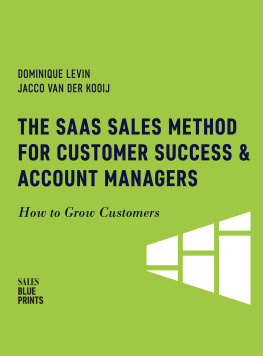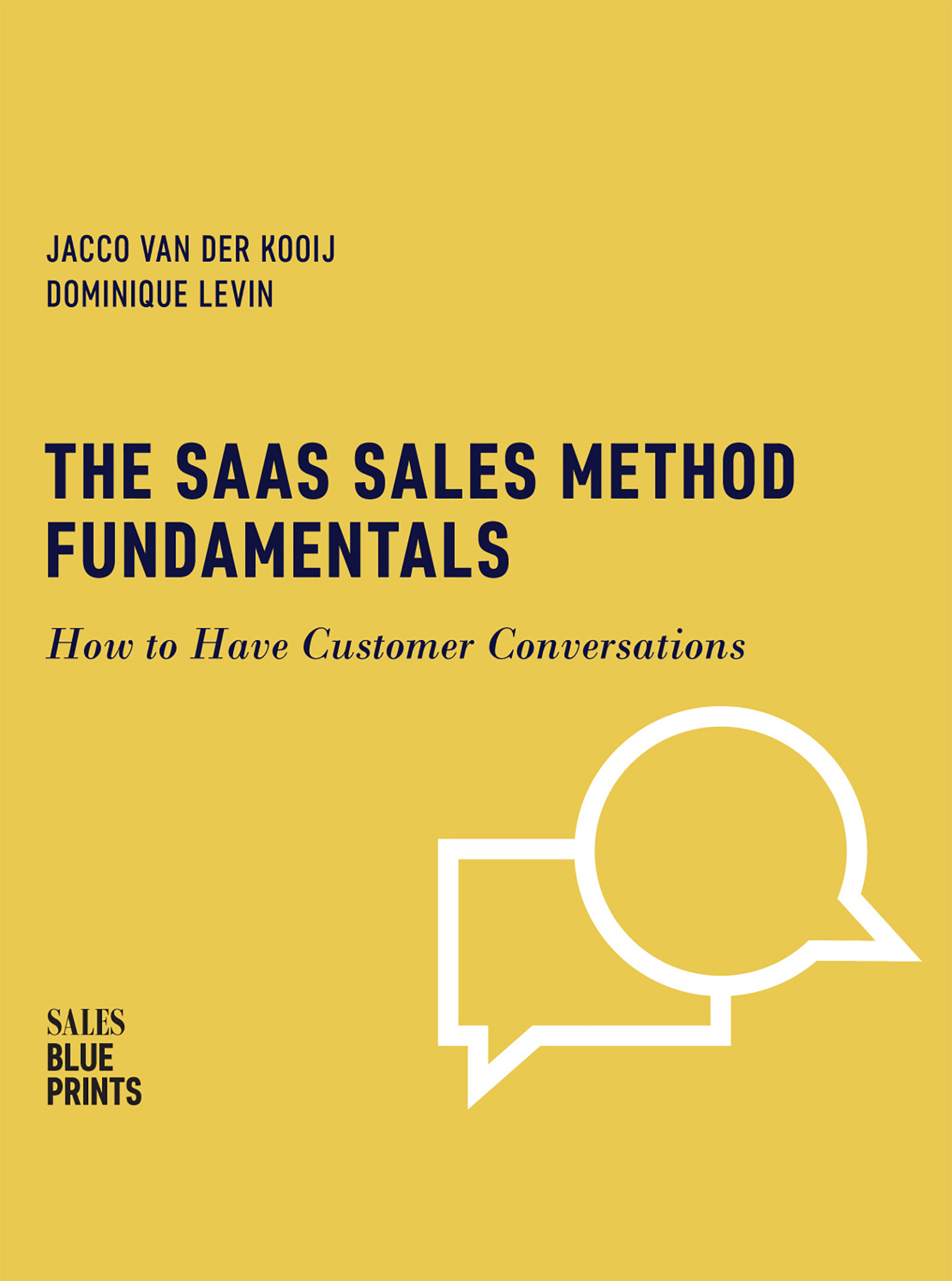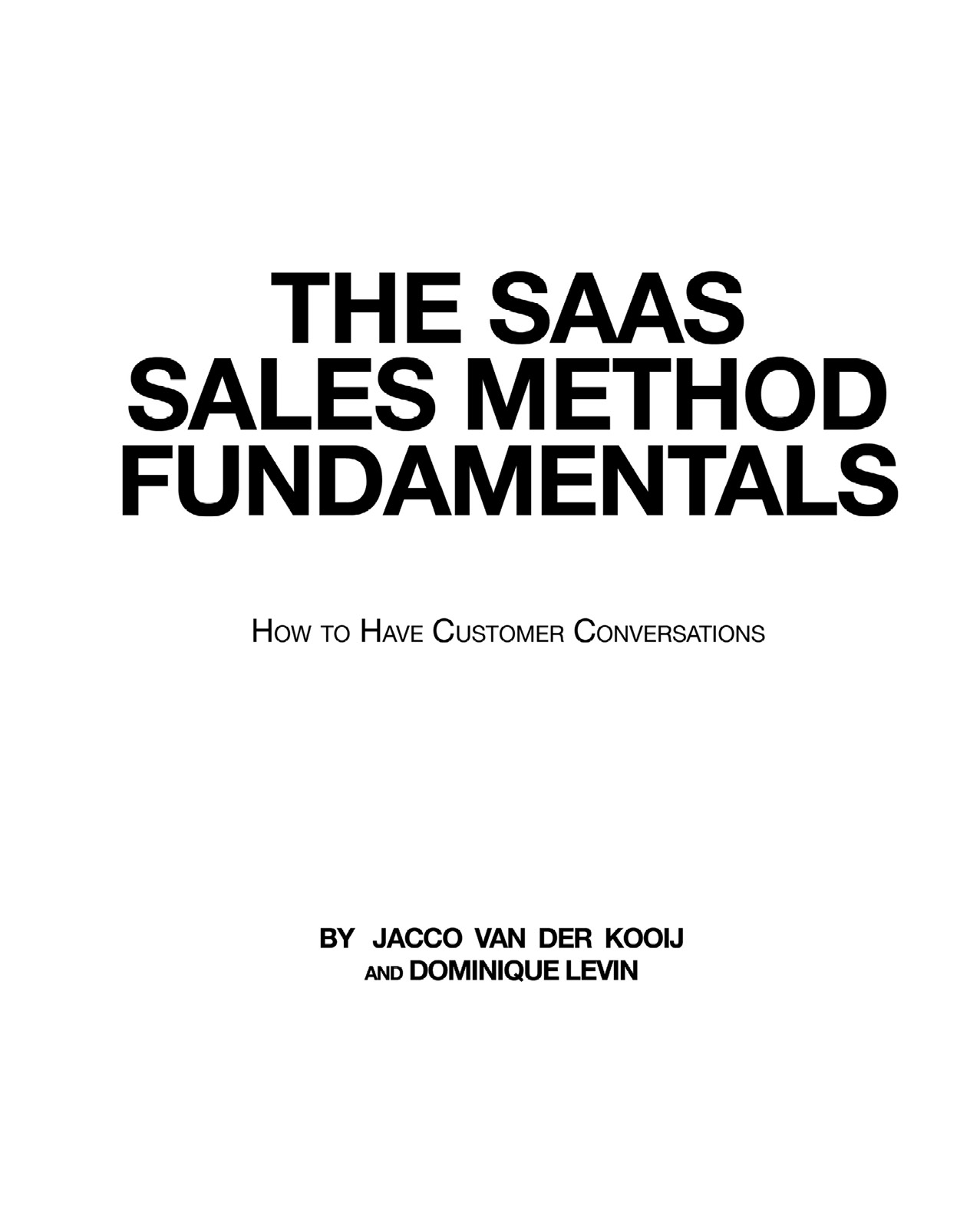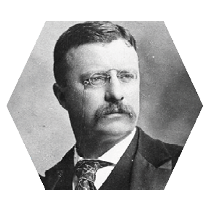Copyright 2018. Published by Winning By Design LLC, a Delaware company
All rights reserved as permitted under the United States Copyright Act of 1976. No part of this book may be reproduced, used or distributed in any form or by any means, or stored in a database or archive, without the expressed written consent of the publisher.
The contents of this book were created in the United States of America.
Edited by Fernando Pizarro and Dan Smith
Revision 5.0
ISBN-13:
ISBN-10: 4
Winning by Design LLC
San Francisco, California
United States of America
For more information, visit www.winningbydesign.com
More from Winning by Design
The SaaS Sales Method Fundamentals: How to Have Customer Conversations is part of Winning by Designs Sales Blueprints series. Other books in the series include:
The SaaS Sales Method: The Science and Process of Sales
Blueprints for a SaaS Sales Organization: How to Design, Build and Scale a Customer-Centric Sales Organization
The SaaS Sales Method for Sales Development Representatives: How to Prospect for Customers
The SaaS Sales Method for Account Executives: How to Win Customers
The SaaS Sales Method for Customer Success & Account Managers: How to Grow Customers
Contents
Introduction
Regardless of what whiz-bang technology you choose to reach your customers, what you say and how you say it is still the most important part of customer engagement. The purpose of this book is to help you learn what to say and how to say it through practice and application.
The skills you learn in this book will help you in everything you do as a sales professional, and we will refer back to them often as we build out sales blueprints going forward.
NOTE: These books are meant to get dirty! We encourage you to write in them, do the exercises, dog ear the pages, and anything else that will help you interact with the content.
1. Communication
| Nobody cares how much you know... ...until they know how much you care Theodore Roosevelt |
Before you start engaging with your customer, you must master three basic elements:
- Know what a customer-centric methodology is: Putting yourself in their shoes, and starting conversations always keeping this in mind.
- Understand your customer: Do your research understand their role, their persona, their industry, and the specific use-cases and customer stories that will help you relate to them.
- Be a customer-centric professional: Show up every day on time, energized and ready to perform. Your workplace both online (LinkedIn) and in the real world need to be set up to help you and your customer succeed.
To engage a customer, we use these elements:
- We string six forms of Interactions together...
- ...into Sequences that are applied across stages (such as Prospecting, Winning, and Growing)...
- ...into a series of sales plays...
- ...resulting in a series of meetings.

Figure 1: Great conversations happen through different interactions
In Figure 1, you can see how key conversation techniques can be applied in 6 different kinds of interactions, which in turn can be applied to sales development, sales, customer success, and account management.
Table 1.1 Interactions you need to excel at as a sales professional

1.1 Winning By Design Communication Technique
During the sales process, you are communicating with your customer. This requires that you become a specialist in communicating outside your age bracket, outside your culture, and beyond. You have to learn how to communicate with anyone/anytime. Below are 9 keys to customer-centric communication.
T one of voice
A sk questions
L isten to what your client says
K eep notes and include your customers tone words
E laborate by digging deeper with the intent to understand
R epeat back what you have learned
1.1.1 Tone of Voice
In a phone call, your voice is the most powerful tool of all, and it is an instrument you need to learn how to play. If you are able to understand the power of tone, you can translate it into email and text messages.
EXERCISE Watch this video Credit: Julian Treasure and TED Google search or type: http://goo.gl/Dd2gCN | ACTION: Identify the different ways to control your voice. What are they? |
1.1.2 Ask Questions
| The ABCs of Customer-Centric Communication : Always Be Curious Jacco van der Kooij |
When you are on the phone with a customer, it hurts you to start selling straight away, like so many sales professionals feel they have to. Great sales professionals start by asking questions to diagnose the situation, without mentioning the company they work for or service they sell. Through the art of questioning, they determine where the prospect has pain. Once the pain is identified, then they can determine the severity (priority).
For example, imagine that you are an off-duty doctor who sees someone limping. Before you are able to offer a recommendation of using a cast or just using pain medication, you must understand what happened and assess their circumstances. If you just start telling them what to do (or worse, starting to examine them without establishing your credibility as a doctor first), they will not be open to the help you are trying to offer them.
| PRO TIP The fastest way to earn someones trust is to provide valuable insight and establish yourself as an expert by asking the right kind of questions. Dan Smith |
Question-based selling is simply the most powerful way to understand the customers real pains, if there is a critical event, and the impact it has on their business.
Heres how it works;
- Questions that control the speed of a conversation: Open-ended vs. Closed-ended Questions.
- Questions that control quality of a conversation: Situational vs. Pain Questions.
SPEED of the conversation
People find it a lot easier to respond to are you hungry? vs. why are you hungry? The first one can be answered by a single word (in this case yes/no) which is called a closed-ended question, and the second requires you to elaborate which is called an open-ended question. Think of the speed of the conversation as a car with stick shift. There are gears you can (and sometimes have to) shift through. There are four gears you can use to ask questions.

